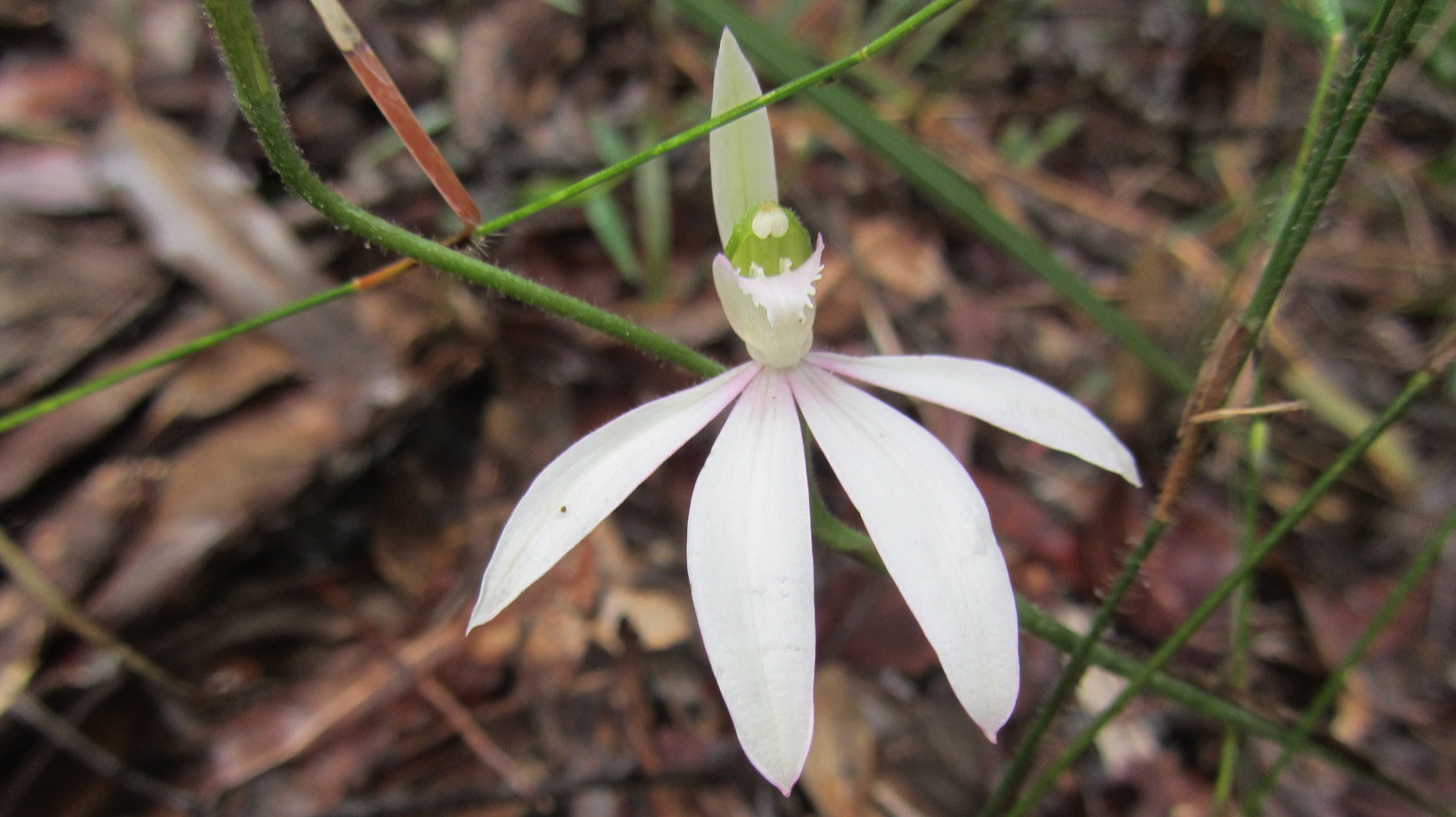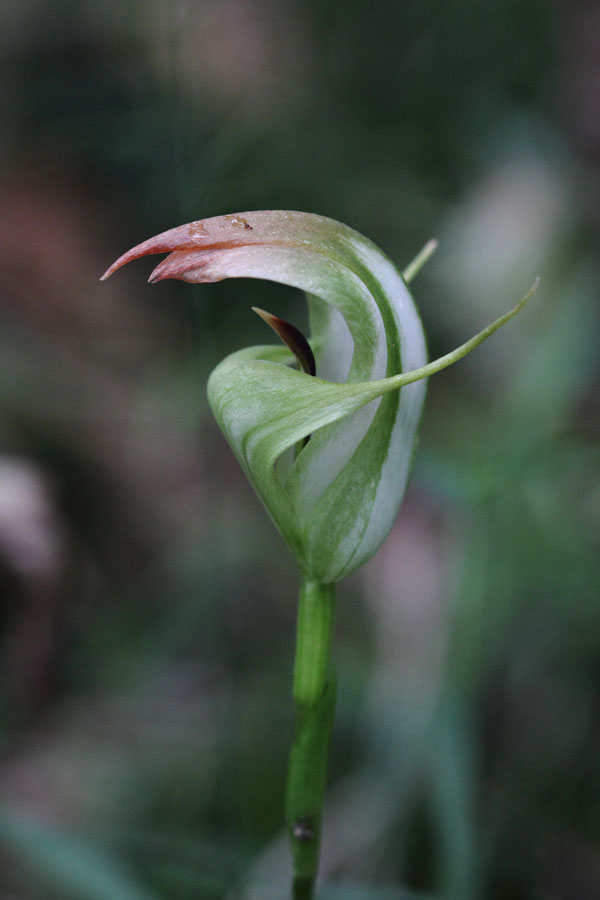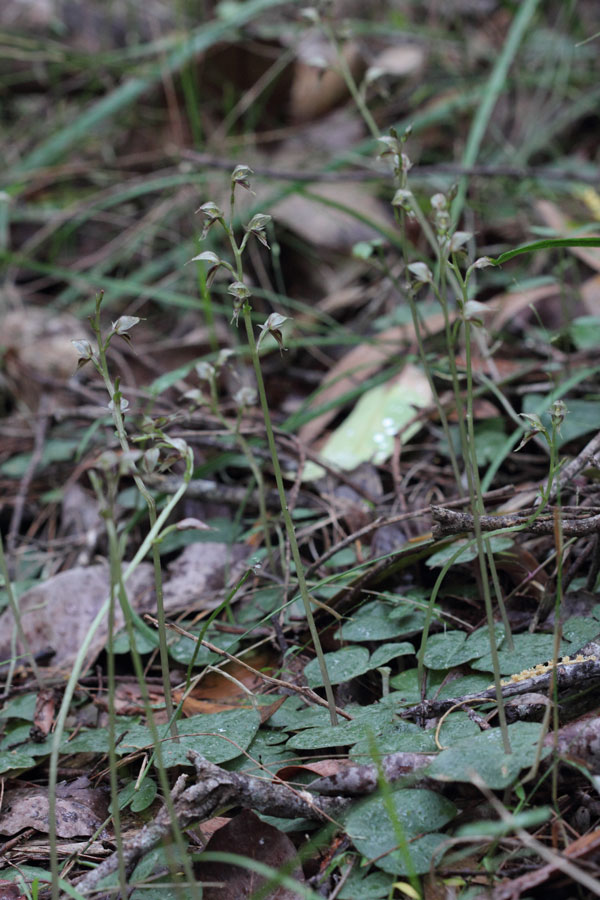Header: White Fingers, King Greenhoods and Pixie Caps are in flower now. Photos by Maree Manby (left) and Deborah Metters.
I gained a love of orchids from my elders who were also intrigued with their beauty and their specific niche in the plant world.
During recent visits to Land for Wildlife properties in Sheldon, large colonies of terrestrial (ground growing) orchids were on display. In previous years, they were present, but not as abundant. The wonderful Land for Wildlife members, custodians of these orchids, also share my enthusiasm, and this reinvigorated my appreciation for these plants.
The three orchid species recently seen were King Greenhoods (Pterostylis baptistii), Pixie Caps (Acianthus fornicatus) and White Fingers (Caladenia catenata). All of these terrestrial orchids like well-drained, moist sites and are mostly found on southern slopes, in gullies or near watercourses. Some areas where they grow in Sheldon are periodically inundated.

White Fingers in flower
Orchids are remarkable in that they require mycorrhizal fungi to exist. Without fungi, orchid seeds would not germinate. In addition, fungi attach to orchid roots and transport nutrients from the soil to the plant. Without fungi, some orchids could not grow or flower.

King Greenhoods in flower

Pixie Caps in flower
Terrestrial orchids have extremely small seeds and only a tiny percentage of seeds dispersed will germinate. Orchids are sensitive, so if you have them on your property, please protect them from disturbances such as trampling by stock, machinery compaction or slashing. It is also best to avoid using herbicides, fungicides, fertilisers or pesticides near them as orchids, their fungal partners and their pollinators can be killed by chemicals and soil nutrient changes. Consider hand weeding around orchid colonies.
If you are lucky enough to have terrestrial orchids on your property, please consider photographing them, recording the time of year in which they flower and letting your local Land for Wildlife Officer know about them.
Article by Maree Manby Land for Wildlife Officer Redland City Council
